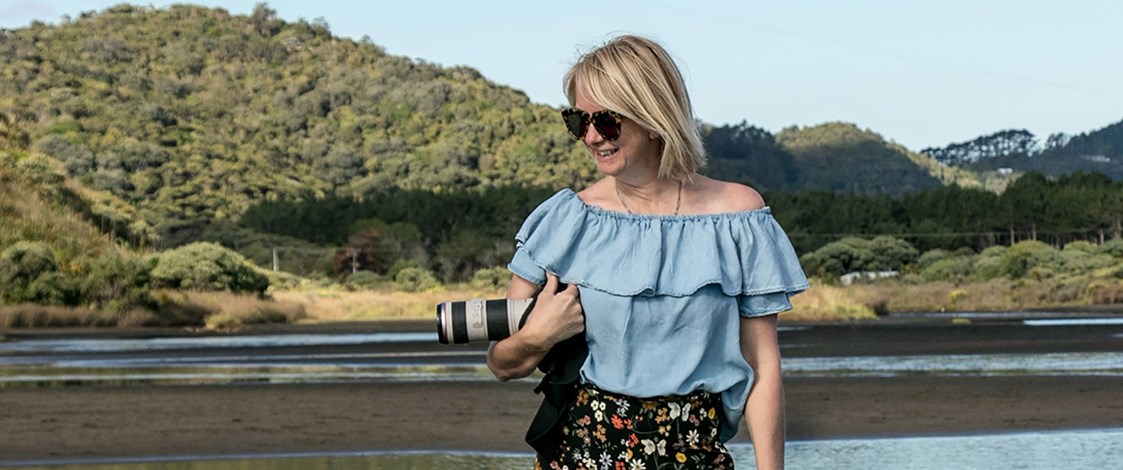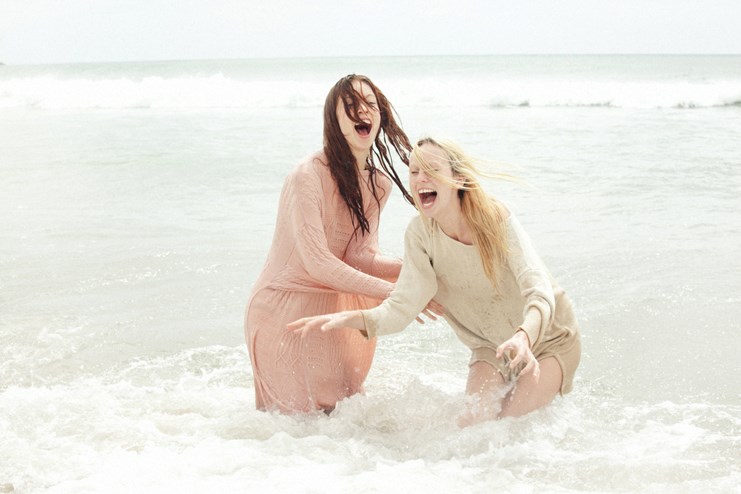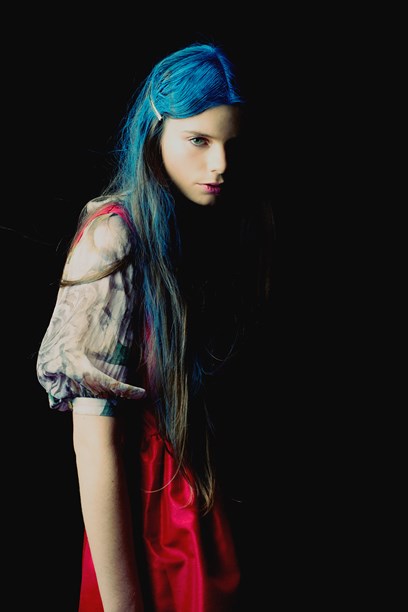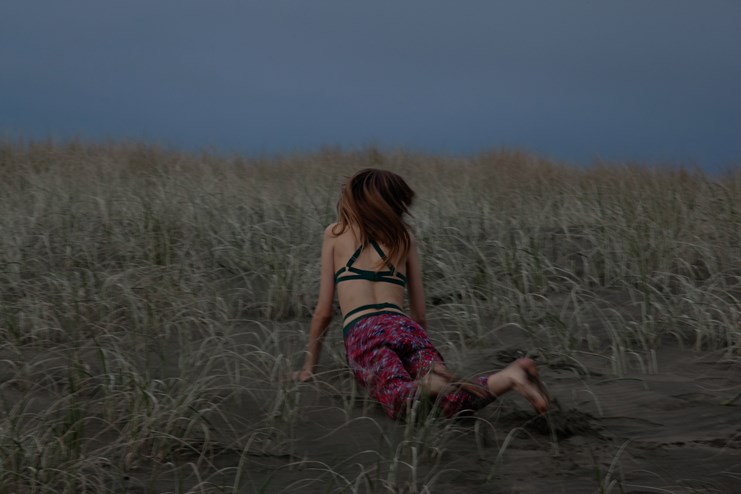Stories
Sara Orme

It is a curious fact that while women are primarily both the subject and target audience of fashion that when it comes to image making they are very much in the minority. Fashion photography has been and still is dominated by males behind the camera and women in front. This is a phenomenon that continues to engage Sara Orme and informs her thinking and her practice.
Sara grew up in Christchurch; as the daughter of an art teacher mother and a Māori activist lawyer father she remembers it as a stimulating environment. The combination of creativity and social awareness found expression in the choice of subjects she pursued at Canterbury University where she gained a Bachelor of Arts degree majoring in Sociology and Art History. Her first son was born at this time and his care fell largely to her, impacting on her life and work choices which needed to be flexible rather than career driven.
She moved to Auckland with her son and in 1992 enrolled in a photography course at Unitec. Even though the course was led by a woman Sara did not experience it as a supportive environment for women. While she says she worked hard and with dedication, spending late nights in the darkroom which she had set up at home, she recalls that when she gave birth to a second son two weeks before the end of year and applied for an extension, it was refused because they said it (her pregnancy and birth) wasn’t considered a valid reason.
This was a salient lesson in how things were in the "real world" she was about to enter. Fashion photography in the 1990s was, and still is, a domain largely dominated by men behind the lens and women in front of it. Naively Sara expected to just walk into this world and find a place for her voice. She chose not to follow the usual pathway of assisting an established photographer, but instead did all her learning on her own, a strategy she credits with helping her to develop a clear personal point of view. Sara’s imagery, sometimes moody and painterly, at other times unbounded and full of energy, is always inflected with her own experience of the world and the human condition.
Large format Polaroid photos of Rachel Gilcrest and Pamela Tinning for Schwarzkopf, 1997.
Although the magazines weren’t falling over themselves to employ her in first instance she did slowly build up her reputation and her own clientele landing jobs with some of the many fashion and lifestyle magazines that flourished in the late 1990s and early 2000s. Fashion Quarterly, More, She, Style and Girlfriend all produced fashion editorials using local photographers and Sara got her fair share of this work. Photographer Neil Gussey was very supportive of her and gave her an entrée into the magazine scene. But she reflects that she was never cool enough to be asked to photograph for Pavement. Appearance was important even for those behind the camera and Sara believes that there was a feeling that women, especially women with children, should be shooting weddings and portraiture rather than fashion. She recalls hiding the children’s car seat in the boot of the car so that she would not be judged on that criteria when working.
With two children and a freelancing husband she did find it difficult to sustain her work in fashion and she too veered more into weddings and portraits and other commercial ventures that were more compatible with family life.
In 2011 she returned to fashion photography with the Freedom project, a collaboration with Courtney Sanders - the stylist, writer and creative behind Always Sometime Anytime and now wellmadeclothes.co.nz. Inspired by the book with the same name by American writer Jonathan Franzen, Sara and Courtney went on a road trip with a suitcase of clothes from Lonely Hearts (now Lonely) and two fresh new models Lili Sumner and Kitty Riddell. Across three locations they created a series of lively fashion photo essays that celebrate youth, beauty and friendship.

Photo of Lili Sumner and Kitty Riddell for the Freedom Project - a collaboration between Courtney Sanders and Lonely Hearts.
Further collaborations with Courtney followed for Catalogue and other Australia and online magazines such as Russh, Fallen and Yen.

Photo for Fallen magazine, 2014. Image © Sara Orme.
Redemption, a collaborative photo essay which explores emotional states, states of undress and female sexuality in a fashion context was exhibited at The Keep, Lela Jacob’s space on Karangahape Road in Auckland 2013. This led to Lela commissioning Sara to photograph her next campaign. Sara shot the campaign in a studio using her large format Polaroid camera and the images became soft and ethereal like drawings.
Sara’s re-entry into the much changed world of fashion photography included creating online editorial and campaigns for Lonely, Max Fashions, The Department Store and Ruby.

Photo for Lonely Hearts. Image © Sara Orme.
Sara learned her photography using analogue technology, a slow, labour intensive and considered process. Because film is expensive and the captured image is hidden inside the camera until it is developed and printed, the photographer must be mindful of all the elements of light, composition and subject before the shutter clicks. Sara draws on these same skills for her recent creative projects using a large format Polaroid camera. She was interviewed by the Advertising and Illustrative Photographers Association about 'Classic', an eight-page fashion spread for Catalogue magazine with model Ashleigh Good that was shot on location in a dingy old hotel in Panmure. "For me, shooting Polaroids is the nearest thing to painting on canvas. It has such a painterly, dreamy finish. I guess it also takes me back to studying all those great painters of centuries ago, in particular the 17th century Dutch painters who used their craft to explore an emotional quality that became apparent in their work."
But not all emotions are dark, moody or ethereal, sometimes they can be full of action and vitality and the 35 mm format camera has the range to capture that energy. Although Sara remembers that she was at first reluctant to replace her analogue camera, she did make the transition to the digital age and recalls a moment when up late at night working on the computer on images from a photo shoot that that hesitant relationship turned to love. She saw the limitless potential that digital offered, allowing the photographer to just shoot and shoot and shoot, virtually unconstrained by movement and light. Being able to tap into both strategies: the slow considered intense approach required for large format Polaroid and the immediacy and vibrancy of 35 mm digital allows Sara to give expression a whole range of emotions.
From behind the lens Sara gives expression to her passions and personal experiences. Through her camera she paints pictures that represent her ongoing engagement with commerce, sociology and art.
Text by Doris de Pont. Banner image © Sara Orme.
Last published June 2018.